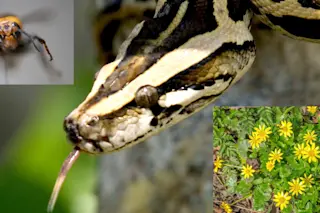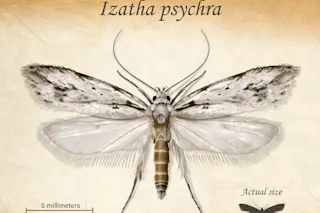When times get tough, bacillus gets pregnant. Normally the common soil bacterium divides by binary fission; it doubles its chromosomes and builds a septum--a wall--right down its center, dividing itself in half and producing two identical twin cells. But when food starts to run out, and survival becomes paramount, such equality is the first thing to go. Binary fission is still the order of the day, but the precursor cell now places the septum closer to one pole than another, producing two unequal cells-- only one of which will survive.
The larger of these cells, now called the mother cell, engulfs its smaller sibling, now called the forespore, creating a cell within a cell. For some ten hours, the mother nurtures that forespore, using most of its energy to stitch together a sturdy protein coat for the life growing within. Once completed, this coat will help make the spore one ...














